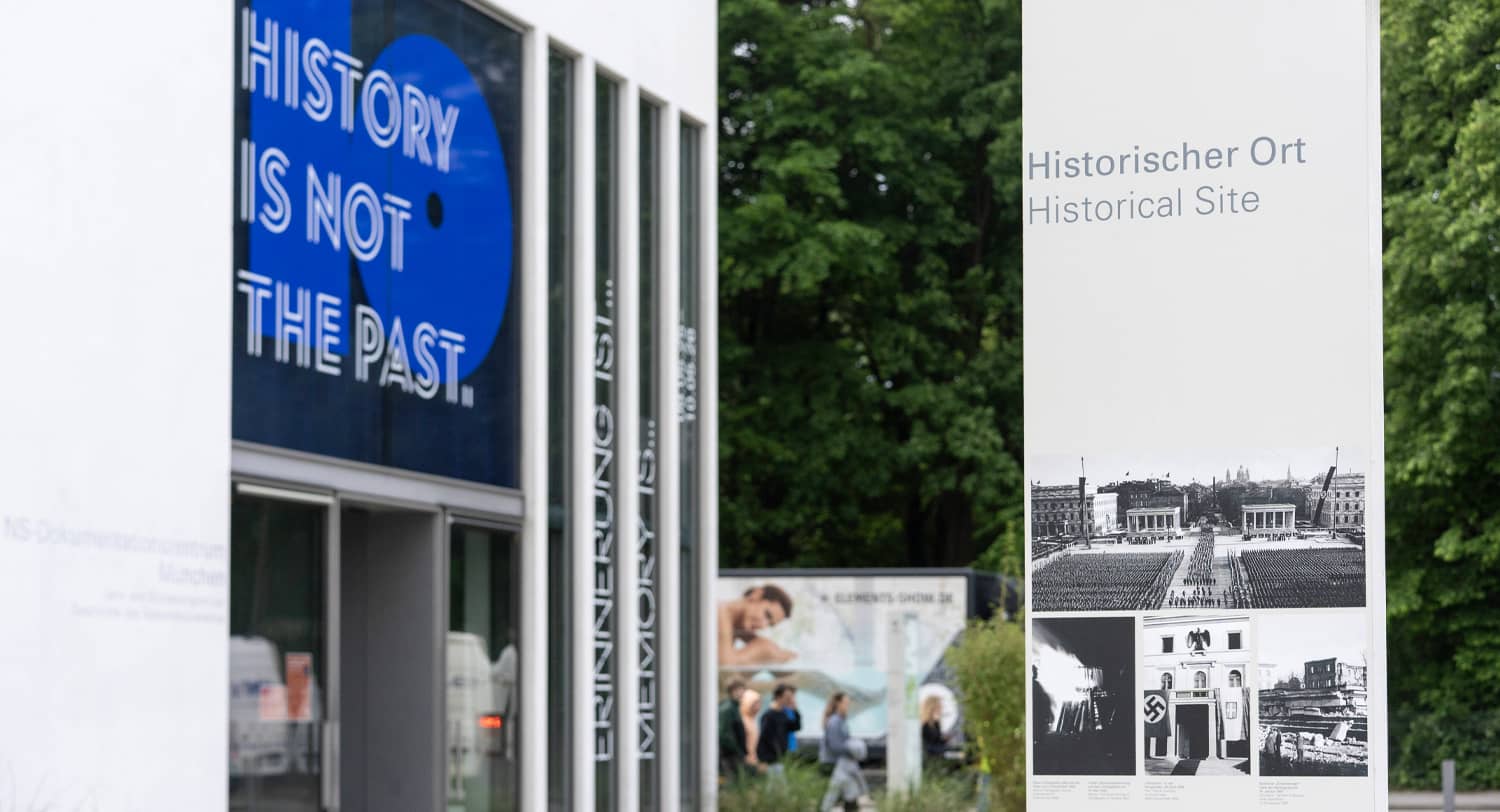Munich is a city the Nazis regarded with special affection, terming it Hauptstadt der Bewegung, “capital of the movement.” Here in 1919 the German Army stationed Adolf Hitler after the First World War, employing him as a political agent. Here in November 1923 Hitler led the abortive Beer Hall putsch that was supposed to lead to a march on Berlin, in the spirit of Mussolini’s earlier successful assault on Rome. A new book by the German historian Wolfgang Niess suggests that Hitler was a dilettante who bungled the coup by launching it precipitously. Nevertheless, capitalizing on the publicity from his trial in Munich, he went overnight from local hero to national figure.
During a recent stay in Munich, I visited a new exhibition on Lee Miller. A former New York fashion model, Miller became a famous photographer. The exhibition showcases her black-and-white photographs of the Second World War, including Dachau and Buchenwald concentration camps. They offer an indelible portrait of Germany’s Stunde Null, Zero Hour, when it surrendered in May 1945.
Entering Germany as a war correspondent embedded with American troops, Miller visited Hitler’s apartment in Munich where she was photographed sitting in the Fuhrer’s bathtub. In the photo, Miller’s boots are resting on his bathmat, covered in mud from Dachau concentration camp. She had taken numerous pictures of Dachau, including one of freed prisoners in their striped camp uniforms sitting near a barbed wire fence and scavenging in a rubbish dump dense with smoke, published in Vogue with the terse caption “Believe It.”
Even today, though, not everyone wants to believe it. The new coalition government led by Chancellor Friedrich Merz is trying to combat Holocaust denial and other expressions of the far right. Among the groups recently banned is the “Kingdom of Germany.” It numbers around 6,000 members and is led by Peter Fitzek, a former chef and karate instructor, who lives in a castle in the state of Saxony and founded his movement in 2012 in the small town of Wittenberg (where Martin Luther nailed his theses to the church door in 1517). A self-proclaimed monarch, “Peter the First, the Son of Man, the Messiah,” he champions the fictitious claim that the historic German Reich continues to exist, relieving him and his followers of the obligation to observe the laws of the Federal Republic.
Such groups are small fry, but the Alternative Party for Germany is not. The AfD began as a monetarist revolt against the European Union and has moved steadily right, capitalizing on unease with successive waves of immigration. It has also tapped into discontent with German responsibility for World War II and the Holocaust, with some of its members even trying to resurrect Prussia as a lodestar for contemporary Germany.
In the February federal elections, the AfD won 20.8 percent of the vote, becoming the second most popular party in Germany after the Christian Democrats. A recent report by the Federal Office for the Protection of the Constitution branded it a “confirmed far-right extremist” party on the basis of the statements of its more flamboyant members such as the 69-year-old parliamentarian Christina Baum, a former dentist, who warns against the “mixing of races.” Baum describes May 8, 1945 (when Nazi Germany officially surrendered) not as representing a day of liberation, but, rather, the subjugation of the German nation.
Also making headlines is AfD parliamentarian Maximilian Krah who explained to an Italian newspaper last June that not all members of the SS had been “automatically criminals.” Krah is now being investigated on charges of bribery by China. Then there is the parliamentarian Matthias Helferich who has referred to himself as the “friendly face of National Socialism.” A new report from the weekly Der Spiegel discloses a trove of racist and antisemitic emails that Helferich sent to a student fraternity in Bonn called Frankonia.
German courts will eventually face the question of whether or not the report of the Federal Office for the Protection of the Constitution warrants officially banning the Alternative Party for Germany—a bad idea that would likely result in a new and even more popular party emerging on the far right.
As it stands, the Christian Democrats, Social Democrats and Greens have combined forces to prevent the Alternative Party for Germany from occupying any chair or vice-chair posts in the federal parliament’s committees. Germany’s Constitutional Court had already ruled that it did not have an automatic right to chair any Bundestag committees. But the determination to box out the Alternative Party for Germany allows its adherents to present themselves as beleaguered victims of establishment parties that are intent on quashing any fresh voices or thinking.
Secretary of State Marco Rubio recently claimed that the classification of the Alternative Party for Germany as extremist was “tyranny in disguise.” And this past January, Elon Musk addressed a party campaign meeting, averring that it was time for Germans to “move on” from any lingering sense of responsibility for the Nazi past. Move on? The Lee Miller exhibition in Munich suggests a different verdict.



